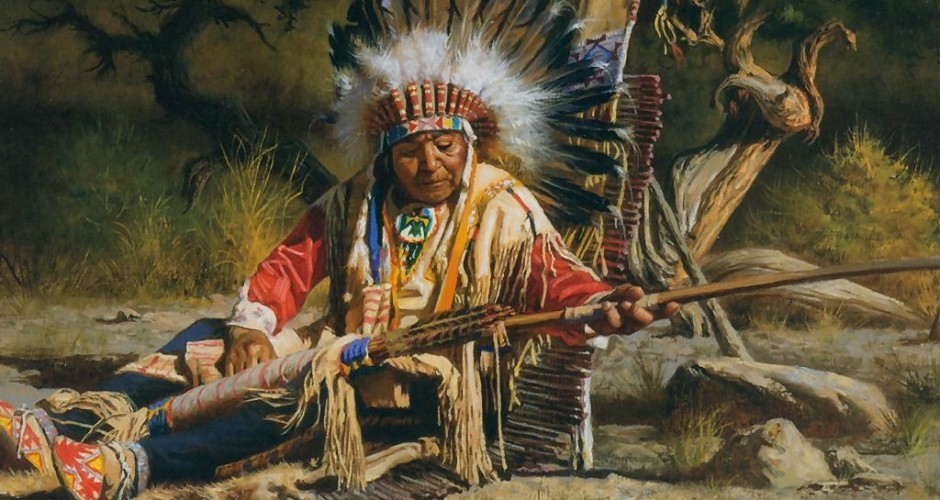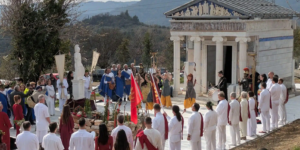No pretext has been wanted, no opportunity lost, whenever it has been deemed necessary to get them out of the way. At Nome Cult Valley, during the winter of 1858-’59, more than a hundred and fifty peaceable Indians , including women and children, were cruelly slaughtered by the whites who had settled there under official authority, and most of whom derived their support either from actual or indirect connection with the reservation. Many of them had been in public employ, and now enjoyed the rewards of their meritorious services. True, a notice was posted up on trees that the valley was public land reserved for Indian purposes, and not open to settlement; but nobody, either in or out of the service, paid any attention to that, as a matter of course. When the Indians were informed that it was their home, and were invited there on the pretext that they would be protected, it was very well understood that, as soon as government had spent money enough there to build up a settlement sufficiently strong to maintain itself, they would enjoy very slender chances of protection. It was alleged that they had driven off and eaten private cattle. There were some three or four hundred head of public cattle on the property returns, all supposed to be ranging in the same vicinity; but the private cattle must have been a great deal better, owing to some superior capacity for eating grass. Upon an investigation of this charge, made by the officers of the army, it was found to be entirely destitute of truth: a few cattle had been lost, or probably killed by white men, and this was the whole basis of the massacre . Armed parties went into the rancherias in open day, when no evil was apprehended, and shot the Indians down–weak, harmless, and defenseless as they were–without distinction of age or sex; shot down women with sucking babes at their breasts; killed or crippled the naked children that were running about; and, after they had achieved this brave exploit, appealed to the state government for aid! Oh, Shame, Shame, where is thy blush, that white men should do this with impunity in a civilized country, under the very eyes of an enlightened government! They did it, and they did more! For days, weeks, and months they ranged the hills of Nome Cult, killing every Indian that was too weak to escape; and, what is worse, they did it under a state commission, which in all charity I must believe was issued upon false representations. A more cruel series of outrages than those perpetrated upon the poor Indians of Nome Cult never disgraced a community of white men. The state said the settlers must be protected, and it protected them–protected them from women and children, for the men are too imbecile and too abject to fight. The general government folded its arms and said, “What can we do? We can not chastise the citizens of a state. Are we not feeding and clothing the savages, and teaching them to be moral, and is not that as much as the civilized world can ask of us?”
At King’s River, where there was a public farm maintained at considerable expense, the Indians were collected in a body of two or three hundred, and the white settlers, who complained that government would not do any thing for them, drove them over to the Agency at the Fresno. After an expenditure of some thirty thousand dollars a year for six years, that farm had scarcely produced six blades of grass, and was entirely unable to support over a few dozen Indians who had always lived there, and who generally foraged for their own subsistence. The new-comers, therefore, stood a poor chance till the agent purchased from the white settlers, on public account, the acorns which they (the Indians ) had gathered and laid up for winter use at King’s River. Notwithstanding the acorns, they were very soon starved out at the Fresno, and wandered away to find a subsistence wherever they could. Many of them perished of hunger on the plains of the San Joaquin. The rest are presumed to be in the mountains gathering berries.
At the Mattole Station, near Cape Mendocino, a number of Indians were murdered on the public farm within a few hundred yards of the head-quarters. The settlers in the valley alleged that government would not support them, or take any care of them; and as settlers were not paid for doing it, they must kill them to get rid of them.
At Humboldt Bay, and in the vicinity, a series of Indian massacres by white men continued for over two years. The citizens held public meetings, and protested against the action of the general government in leaving these Indians to prowl upon them for a support. It was alleged that the reservations cost two hundred and fifty thousand dollars a year, and yet nothing was done to relieve the people of this burden. Petitions were finally sent to the state authorities asking for the removal of the Indians from that vicinity; and the state sent out its militia, killed a good many, and captured a good many others, who were finally carried down to the Mendocino reservation. They liked that place so well that they left it very soon, and went back to their old places of resort, preferring a chance of life to the certainty of starvation. During the winter of last year a number of them were gathered at Humboldt. The whites thought it was a favorable opportunity to get rid of them altogether. So they went in a body to the Indian camp, during the night when the poor wretches were asleep, shot all the men, women, and children they could at the first onslaught, and cut the throats of the remainder. Very few escaped. Next morning sixty bodies lay weltering in their blood–the old and the young, male and female–with every wound gaping a tale of horror to the civilized world. Children climbed upon their mothers’ breasts, and sought nourishment from the fountains that death had drained; girls and boys lay here and there with their throats cut from ear to ear; men and women, clinging to each other in their terror, were found perforated with bullets or cut to pieces with knives–all were cruelly murdered! Let any one who doubts this read the newspapers of San Francisco of that date. It will be found there in its most bloody and tragic details. Let them read of the Pitt River massacre , and of all the massacres that for the past three years have darkened the records of the state.
I will do the white people who were engaged in these massacres the justice to say that they were not so much to blame as the general government. They had at least given due warning of their intention. For years they had burdened the mails with complaints of the inefficiency of the agents; they had protested in the newspapers, in public meetings, in every conceivable way, and on every possible occasion, against the impolicy of permitting these Indians to roam about the settlements, picking up a subsistence in whatever way they could, when there was a fund of $250,000 a year appropriated by Congress for their removal to and support on the reservations. What were these establishments for? Why did they not take charge of the Indians ? Where were the agents? What was done with the money? It was repeatedly represented that, unless something was done, the Indians would soon all be killed. They could no longer make a subsistence in their old haunts. The progress of settlement had driven them from place to place till there was no longer a spot on earth they could call their own. Their next move could only be into the Pacific Ocean. If ever an unfortunate people needed a few acres of ground to stand upon, and the poor privilege of making a living for themselves, it was these hapless Diggers. As often as they tried the reservations, sad experience taught them that these were institutions for the benefit of white men, not Indians . It was wonderful how the employes had prospered on their salaries. They owned fine ranches in the vicinity; in fact, the reservations themselves were pretty much covered with the claims of persons in the service, who thought they would make nice farms for white men. The principal work done was to attend to sheep and cattle speculations, and make shepherds out of the few Indians that were left.
The successful raiders drove off a herd of gentle horses, and went out through the Cajon Pass. Two of the Lugo’s, with half-a-dozen of their dependents, followed on the fresh trail of the desert Indians , and in the Cajon they found some four or five Americans, and one half-breed Cherokee Indian . The Cherokee being the only one of the party who either spoke or understood Spanish, in response to inquiries, informed the Lugos that there were only three Indians engaged in driving off the herd, and that they (the party) never suspected that they were other than vaqueros legitimately engaged. The Lugo party pressed on, overtook the raiders at the Point of Rocks on the Mojave, and at once, and without counting noses, charged them, and to their intense chagrin and astonishment found the party to consist of some twenty warriors, instead of three. A fierce conflict ensued, hand to hand, in which three of the Lugo party were killed, and several Indians were made to kiss the desert sands. Fortunately the Lugos, armed with Colt revolvers, achieved a splendid victory over the Indians and recovered the entire herd. On their triumphal return with the gory scalps of their enemies dangling at their saddle-bows, they found the same small party yet in the same camp, when the chief Lugo demanded of the Cherokee why he had deceived them about the number of the Indians . The Cherokee replied that he was anxious to see them recover their stock, and was afraid to tell the truth, knowing that they would be too cowardly to follow a party of Indians respectable in numbers. This brought on words, which ended in the Lugo shooting the Cherokee dead on the spot. A short, sharp and decisive conflict then ensued, which resulted in the Americans being entirely wiped out, and hence the prosecution against the Lugos and the attempted assassination of the District Attorney, Benjamin Hayes. The Lugos were finally tried and acquitted, the pioneer lawyer (Brent) who defended them receiving, as the writer has been informed, $20,000 for his fee–surely a fair legal starter in a small frontier town.































